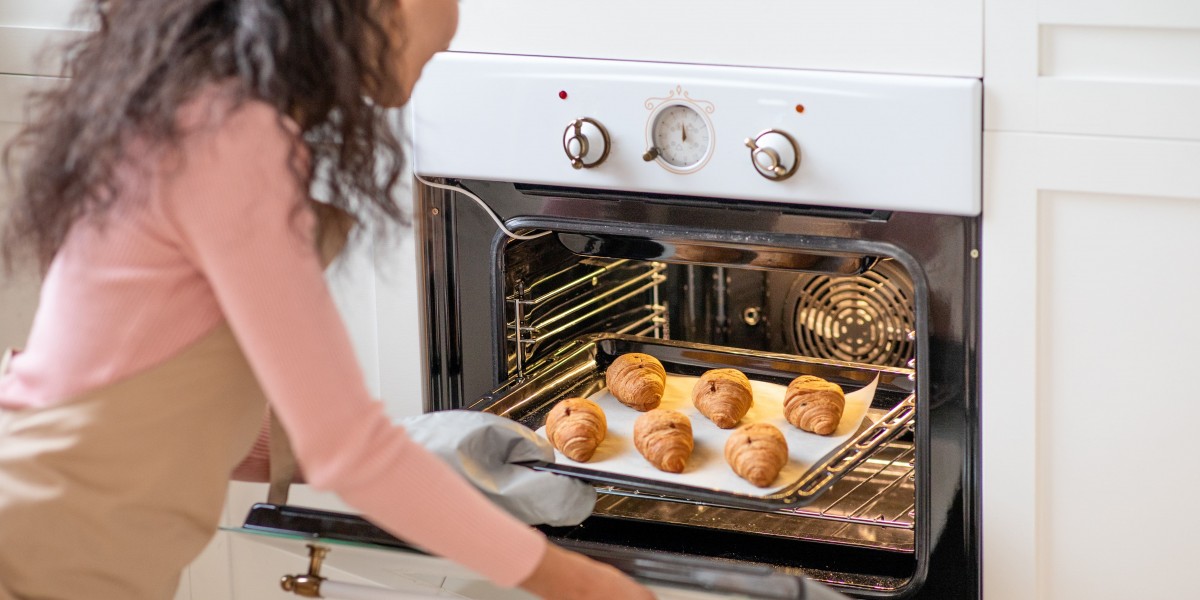The Ultimate Guide to Built-in Ovens: Enhancing Your Kitchen Experience
Built-in ovens have ended up being a popular option in contemporary kitchens, using a blend of performance, style, and benefit. Unlike conventional freestanding ovens, built-in ovens are integrated cookers seamlessly into kitchen cabinetry, supplying a streamlined appearance that can enhance the visual appeal of any kitchen. This article checks out the different types of built-in ovens, their benefits, installation factors to consider, and upkeep tips.
Comprehending Built-in Ovens
Built-in ovens are created to be installed directly into kitchen cabinets, permitting a more personalized kitchen setup. They generally are available in two primary types: single and double ovens.
Types of Built-in Ovens
Single Ovens: These units offer one cooking compartment, suitable for smaller sized kitchen areas or homes where cooking needs are modest.
Double Ovens: As the name suggests, these units include two separate cooking compartments, enabling users to prepare numerous dishes at different temperatures at the same time. This is particularly useful for large households or those who often entertain visitors.
Steam Ovens: These ovens cook food using steam, which can help keep wetness and nutrients. Steam ovens are acquiring appeal due to their health advantages.
Combination Ovens: These versatile appliances combine the functions of a regular oven and a microwave, making them ideal for quick cooking and reheating.
Secret Features to Look For
When considering a built-in oven, there are several functions that can improve your cooking experience:
Smart Technology: Many contemporary built-in ovens come geared up with smart innovation, enabling users to manage their oven remotely via smartphone apps. Features consist of preheating the oven, changing cooking times, and keeping an eye on cooking progress.
Self-Cleaning Functions: Built-in ovens with self-cleaning abilities can conserve effort and time in kitchen maintenance.
Convection Heating: This feature flows hot air for even cooking, making it ideal for baking.
Security Features: Look for designs equipped with features like cool-to-the-touch oven doors and automated shut-off options for added security.
Advantages of Built-in Ovens
Visual Appeal: Built-in ovens supply a smooth and modern appearance that can improve the total design of a kitchen. They can be included into cabinets, making them less invasive than freestanding designs.
Space Efficiency: Built-in ovens enhance kitchen area, especially in smaller sized kitchens where every inch counts. They can be put at eye level, making it easier to keep track of cooking without bending down.
Enhanced Functionality: With their innovative features, built-in ovens & hobs use improved cooking experiences and increased functionality compared to traditional ovens.
Installation Considerations
Setting up a built-in oven needs careful preparation and factor to consider. Here are some essential points to keep in mind:
Space Requirements: Ensure that the picked oven fits snugly into the readily available cabinet space. Procedure the dimensions accurately, representing ventilation and clearance requirements.
Electrical Requirements: Built-in ovens generally require a devoted electrical circuit. Seek advice from with an electrician for correct setup.
Ventilation: Proper ventilation is crucial for optimal oven performance. Confirm that the setup area has sufficient ventilation to prevent overheating and guarantee safe operation.
Professional Installation: While DIY setup may appear tempting, enlisting the help of a professional can guarantee that the oven is set up correctly and securely.
Installation Steps
| Setup Step | Description |
|---|---|
| Action 1: Measure | Step the cabinet opening for your oven. |
| Action 2: Prepare | Prepare the electric outlet and ventilation choices. |
| Action 3: Connect | Connect the oven to power, guaranteeing all safety measures are complied with. |
| Step 4: Secure | Secure the oven within the kitchen cabinetry, using suitable screws and brackets. |
| Step 5: Test | Run a test to guarantee the oven is working effectively. |
Upkeep Tips
Regular upkeep can extend the life of your built-in oven and make sure optimal efficiency. Here are some maintenance tips:
Clean Regularly: Wipe down the oven outside and clean the interior routinely. Usage self-cleaning functions where readily available.
Inspect Seals: Ensure that door seals are intact to keep efficiency and cooking efficiency.
Display Performance: Pay attention to how your oven functions-- if you notice irregular cooking or uncommon noises, it might need expert maintenance.
Follow Manufacturer Guidelines: Always stick to the maintenance guidelines provided by the maker. This can help prevent problems and ensure that warranties remain valid.
FAQs about Built-in Ovens
What is the difference in between a built-in oven and a freestanding oven?
- Built-in ovens are integrated hob and oven into cabinetry, offering a streamlined appearance, while freestanding ovens are standalone appliances that can be put anywhere in the kitchen.
Do built-in ovens need more upkeep than routine ovens?
- Not necessarily. Maintenance depends on use and cleaning habits more than the kind of oven. Routine care is necessary for all ovens.
Can I set up a built-in oven myself?
- While it is possible to set up a built-in oven yourself, it is suggested to work with a professional to ensure safe and precise installation, specifically regarding electrical requirements.
What are the average expenses of built-in ovens?
- Costs can differ considerably based upon brand name, functions, and specs. Fundamental models may begin around ₤ 800, while high-end models can surpass ₤ 3,000.
Are built-in ovens energy-efficient?
- Many modern-day built-in ovens are created to be energy-efficient. Search for models with an ENERGY STAR accreditation for the best efficiency.
In conclusion, built-in ovens are an exceptional addition to any modern-day kitchen, combining visual appeals with functionality. By understanding the different kinds of built-in oven and hob ovens, their functions, and the associated setup and upkeep requirements, property owners can make an informed choice that improves their cooking experience and general kitchen style. As cooking innovation progresses, built-in ovens are likely to play an integral role in the future of home kitchen areas, making sure scrumptious meals are prepared with ease and benefit.








